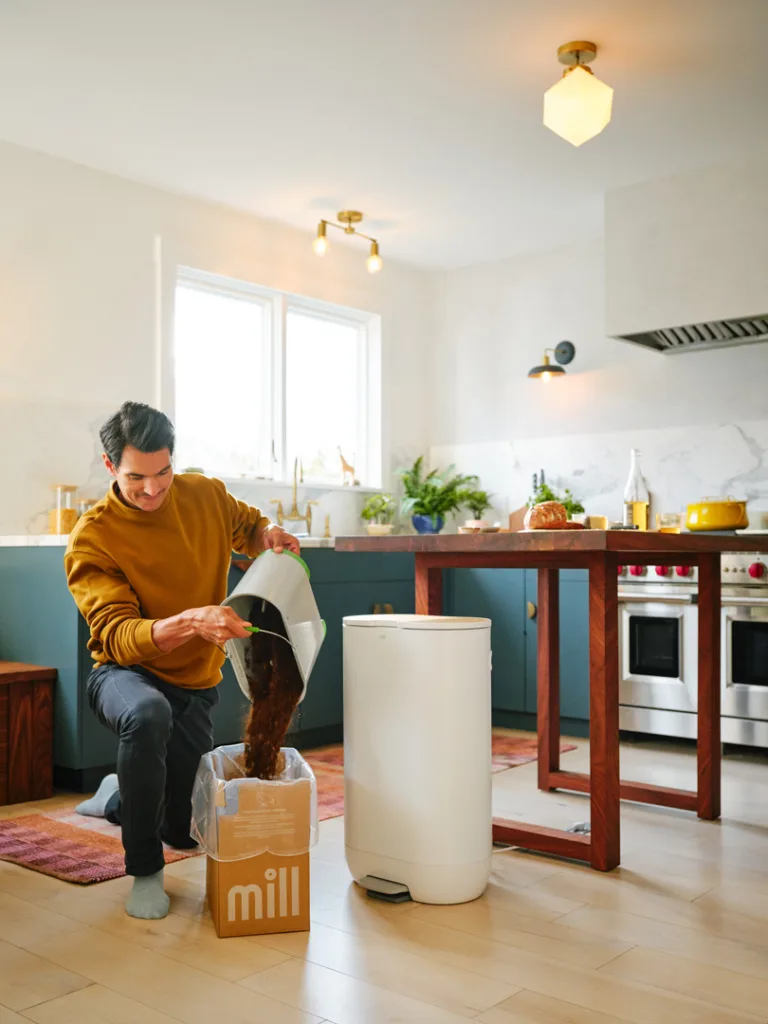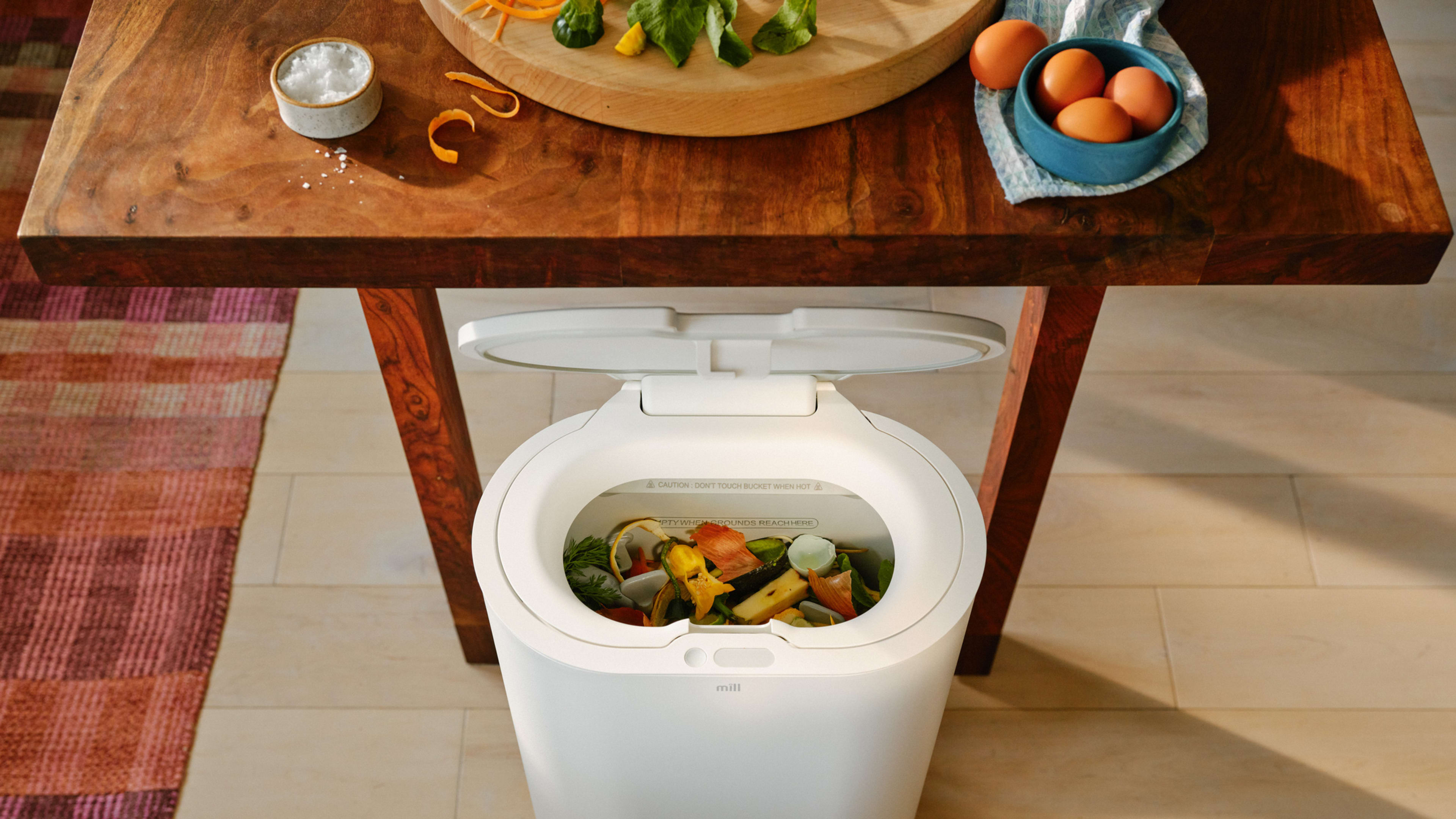Inside a gadget-filled lab at an office outside San Francisco, there’s a refrigerator packed with clear Ziploc bags of rotting food. It’s an extreme version of the experience almost everybody’s had of opening their fridge to discover mold forming on a very leftover meal or a bag of spinach that’s turned into black goo. The bags are there for testing purposes—they represent the typical food scraps an average household produces on a regular basis. Mill Industries, the company that owns the lab, is using them to fine-tune a unique kind of garbage bin called the Mill that can turn those rotting food scraps into chicken feed.
Standing about 27 inches high, the Mill is the size of a typical kitchen garbage bin. But under its lid is a gaping mouth of metal blades that, in combination with a heated bucket, grinds and dries whatever food is added throughout the day. For a $30 monthly subscription fee, or a one-time purchase price of $999, customers can use the internet-connected device to divert their uneaten food from landfills, where it would decompose and produce a potent greenhouse gas. Instead, Mill’s bin is calibrated to preserve the nutrients left in food scraps, making them easier to reuse without the climate impact.
The rotting food in that lab fridge will eventually get dumped into sensor-rigged Mill bins in the company’s lab. Under the data-obsessed eyes of the company’s engineers, the bins are closely monitored to see how efficiently they can chew through everything from corn cobs and celery ends to fishbones and avocado pits. Some bags are stuffed with especially potent foods like rotting shrimp, kim chi, and blue cheese—the staff calls these stink bombs—to check the bin’s odor containment.

One engineer holds a smoking stick of incense up to a fan near the bin’s filter to check for any places smells might leak out from. Another checks on a durability test that’s repeatedly stomping on the bin’s foot pedal. “As you can see,” says Mill cofounder Matt Rogers as he shows me around the lab, “a lot of roboticists are making this machine.” They’re trying to streamline both the user experience and the mechanics of turning food waste into something less wasteful.
Recognize your brand’s excellence by applying to this year’s Brands That Matter Awards before the final deadline, June 7.
Sign up for Brands That Matter notifications here.
